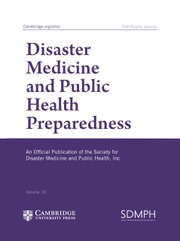No CrossRef data available.
Article contents
Assessing the Public Health Consequences of Terrorist Attacks on Telecommunications Infrastructure: A Global Analysis
Published online by Cambridge University Press: 10 December 2024
Abstract
This study investigates the public health implications of terrorist attacks on telecommunications infrastructure globally, assessing the direct and indirect impacts on emergency response and medical services.
Utilizing retrospective analysis, this research delves into incidents recorded in the Global Terrorism Database (GTD) from 1970 to 2020. The study employs descriptive statistical methods to identify patterns and examine the regional distribution and frequency of these attacks, alongside the types of weaponry used and the direct casualties involved.
The analysis underscores a significant focus on telecommunications by terrorist groups, revealing a frequent use of high-impact weapons like explosives and incendiary devices aimed at maximizing disruption. The study highlights considerable regional variations in the frequency and nature of attacks, emphasizing the strategic importance of these infrastructures to public safety and health systems.
The findings demonstrate the critical need for robust security enhancements tailored to regional threats and the integration of advanced technologies in public safety strategies. The research advocates for enhanced international cooperation and policymaking to mitigate the impacts of these attacks, ensuring telecommunications resilience in the face of global terrorism.
Keywords
- Type
- Original Research
- Information
- Copyright
- © The Author(s), 2024. Published by Cambridge University Press on behalf of Society for Disaster Medicine and Public Health, Inc.


